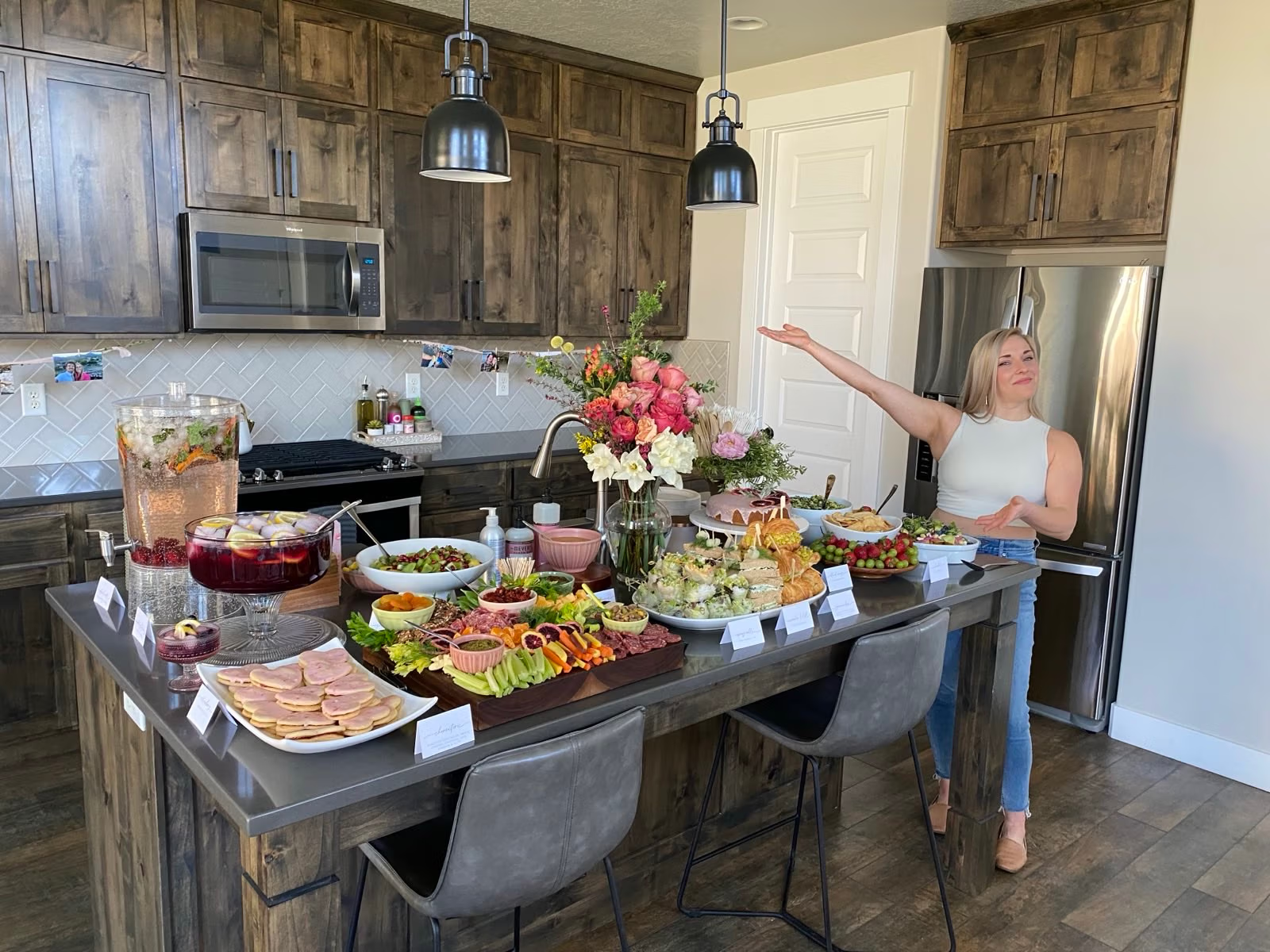Here we are, weeks into spring and arriving at the penultimate Season 11 Deep Dive.
The longer I do this work, the more curious and aware I’ve become about what lessons I might be learning in real time. Looking forward, it’s often impossible to see what sort of evolution we might be undergoing in the present – like I’m constantly saying, you just can’t really know what you’re in the middle of.
But I do think there are usually clues to be found. And with that in mind, I’m inclined to take a quick look back at where we’ve been so far this season.
January’s Deep Dive “Joy Is a Serious Subject,” featuring ceramicist Kate Schroeder, author/translator Zack Davisson, and leatherworker Mike Staum is all about wonder and wondering, following individual intuition and joy through artistic and personal evolution, being protective of (and even selfish about) one’s personal creative interest and motivation.
In today’s present, I’m particularly drawn to this quote from Kate: “I will never go backward again, and I will never not make work. I will always allow myself to continue to grow, and change, and evolve, and make whatever I feel like making in that moment.”
February’s “Notes on Purpose,” featuring German ceramicist Anna Katharina Jens, and surrealist painter William D. Higginson (plus two bonus episodes for which “one true fan” Jaron Davis and bestie Olivia Custodio interview me) discusses the importance of finding “what is hidden in yourself” (Anna), what might “bring your values system to the surface” (Olivia), and that it’s “kind of dangerous” to “hold back the artist in someone” (William). Our diverse perspectives and unique voices are integral to the greatest good.
And finally, “Layers of Understanding,” featuring painter+ Sara Peterson and singer-songwriter Callie Crofts focuses on the choice to dig in, to learn to see, to find new layers of understanding, of meaning; and on being open enough to take in the lessons meant for you, being brave and vulnerable enough to share the truths you discover.
For years now, when asked about my current, upcoming works, my response has been that I’m “doing research.” Lately, I’ve come to a more accurate answer – I’m working to evolve into the person who creates my next work.
In retrospect, I see this intention woven through these past three essays. It really shouldn’t come as a surprise. I’m absolutely aching to discard a few more layers of old, rotten scripts. And there’s an equal itchiness to step farther into an updated version of myself (pixelated though it still may be).
As I look over my notes for April’s guests, I see more of the same.
Pat introduces the idea of “always thinking about the next kind of success” – not just the next success, but the next kind of success. I love the adventure, the whimsy of this distinction. I don’t know that I ever would have thought to phrase it this way, but the thought rings so true.
It connects to so many things for me…unrelenting curiosity, the eschewing of boredom, the pull of newness, comfort in uncertainty, cultivating a gut instinct.
Pat talks about finding “your deeper why.”
“How much strength is in that ‘why’ that then gives you the right attitude to pursue improvement?”
I also loved hearing Pat, an author, reflect on the importance of story. “If the story is missing, the water doesn’t boil…you’ve got to bring the reader to a point where they care…and they want to keep going…the writer’s job is to boil the water.”
I hope Pat will forgive me for taking this very satisfying metaphor out of its original context and perhaps…just focus on boiling my own water. 😅
The “deeper why” seems like a great way to do it. Of course, narrative is part of it as well. We are each the author of our own story.
Robert is an exquisite, exemplary water boiler.
Over the years, I’ve talked with dozens of artists about stick-to-itiveness, dedication, discipline. Eventually, every artist internalizes lessons about patience and perseverance. Practice.
But it’s important to remember these lessons are a means to an end, not the end itself. Again, without that “deeper why,” the work is fairly arbitrary.
I see this higher truth in Robert’s story. Throughout his adulthood, he’s fallen in love with myriad mediums; he’s explored seemingly disparate careers.
Recently, I had a heart-to-heart with a friend who’s learning to really invest in her own identity for maybe the first time. She wants to find meaningful work/craft, but worries she might get stuck in an ill-fitting spot. Something like, “once I start something, I’m the kind of person who sticks with it.”
Of course, there is so much integrity here.
But I wonder whether we could just shift the perspective a bit. Perhaps the “it” (stick with it*) doesn’t need to be this or that career, hobby, project…maybe the “it” could be creative exuberance, deep satisfaction, growth, joy. Through this lens, even the most radical pivot might look like the straightest, truest line.
I think this is how Robert keeps the water boiling.
“When something stopped being stimulating creatively for me, I would put it down and move to something else…I’ve always been someone who just trusted their intuition when it came to what comes next…I have always given myself permission to be open.”
I especially loved hearing Robert talk about the ease with which he’s been able to cast off the incredulity of onlookers with each big move. He knows he isn’t throwing anything away.
In Robert’s words:
“The perception is that once you become vulnerable, you sort of leave yourself open to something bad happening to you. But I look at it the opposite way. I think the most powerful place that you can be is when you’re vulnerable…you are now open to every possibility.”
“If you’re making a decision that you know is right for yourself, you can feel that in your core. You know this is the right decision to make. And within that decision making, the next step will reveal itself to you. It will literally be presented in front of you. If you’re open to seeing what the next step is, it will present itself.”
What an abundant, liberating message. This is powerful stuff.
Again, we don’t know what we’re in the middle of.
And for any fears that remain, Robert shares this wisdom – “once you peel back all of the layers of this shadow, what you realize is then the shadow disappears. The shadow no longer exists. And the only thing that exists beyond it is the light of what you really are.”
I couldn’t love this more.
And finally, as a foil to “wasted time,” Robert offers “everything that you’ve done will inform everything that you do.”
In this way, our wildly meandering paths are indeed straight, and true.
Amber and I began our conversation talking about an upsetting modern phenomenon – as a species, our long vision is suffering. Our eyes are literally moving closer together as we look up, look out, less and less often.
It’s arresting as a fact and as a metaphor.
It also feels related…
In addition to our “fine art” mediums, Amber and I are both teachers who care a lot about our students. We’re both teachers who worry about the languishing of that metaphorical long vision.
I’m in my classroom talking about chord-scale relationships and rhyme scheme, Amber’s in her classroom teaching color theory and principles of space planning, but we both understand that it’s also our responsibility to help our students cultivate these other, very mysterious things…taste, instinct, inspiration, motivation, etc.
And, as Amber puts it, “kids aren’t learning to trust their gut…if you are given the freedom to make a choice about what you room looks like, for example,” or to make other choices about your preferences, “it leads you to have some internal locus of control that [allows you to] then trust your own instincts.”
I think Amber would probably agree that this doesn’t just apply to children.
In our late-stage capitalist society, I think we are all at risk of believing we have so few choices. We’re all at risk of believing there’s only one right place to aim. And we too often enforce these limited perspectives on any fellow humans attempting to diverge.
It’s a monumental obstacle to overcome.
We can teach ourselves (and any of our fellow beings, our students, our children) what kinds of questions to ask, what kinds of feelings to follow, and pay attention to. We can support and encourage each other.
But at the root, the answers will always be profoundly personal. It’s up to each of us to accept our bespoke mission, to boil the water, to find the next kind of success, to harness a deeper why, to discover “the light of what you really are.”
Here’s to looking in, and looking out, out, out.
Love,
Emily
P.S. Here is some of Amber’s stunning work.
P.P.S. Here is a pic of my biggest spring-season project. Full details here.


